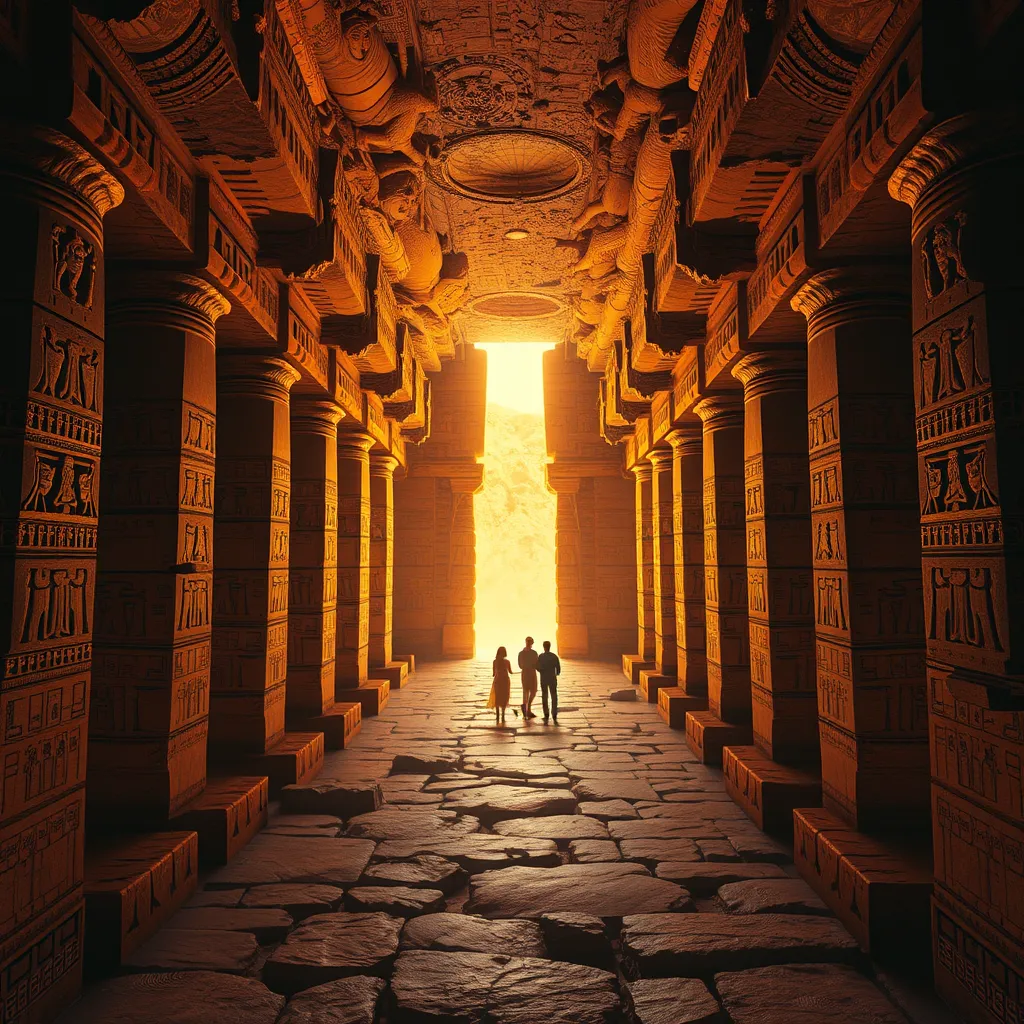The Duat: A Journey Through the Underworld
I. Introduction to the Duat
The Duat, often referred to as the Egyptian underworld, is a complex and multifaceted realm within ancient Egyptian mythology. It represents not only a physical space but also a spiritual journey that the soul undertakes after death. The concept of the Duat is deeply woven into the fabric of Egyptian beliefs about the afterlife, serving as a critical element in their understanding of mortality and resurrection.
In ancient Egyptian culture, the Duat was seen as a place where the deceased would face various challenges before attaining eternal life. This journey through the underworld was filled with symbolism and significance, highlighting the Egyptians’ profound respect for life after death.
II. The Structure of the Duat
The Duat is often depicted as a vast and intricate landscape filled with various regions, each with its own characteristics and trials. The structure of the Duat includes:
- The Waters of Chaos: Representing the primordial waters of creation.
- The Fields of Iaru: A paradise-like area for the souls who have successfully navigated the Duat.
- The Hall of Judgement: Where the heart of the deceased is weighed against the feather of Ma’at, symbolizing truth and justice.
Several key deities are associated with the Duat, including:
- Osiris: The god of the afterlife, who rules over the Duat.
- Anubis: The god who guides the souls and oversees the mummification process.
- Set: Often depicted as a chaotic force and sometimes an adversary to Osiris.
The landscapes of the Duat are rich in symbolism, with various features representing the duality of life and death, chaos and order, and the cyclical nature of existence.
III. The Journey of the Soul
The journey of the soul begins at the moment of death. Upon passing, the deceased enters the Duat, where they must navigate through various challenges and trials. This journey is significant as it determines whether the soul will achieve eternal life or be consumed by the devourer, Ammit.
One of the critical aspects of this journey is the judgment of the heart. In the Hall of Judgment, the heart of the deceased is weighed against the feather of Ma’at. If the heart is lighter than the feather, the soul is deemed pure and allowed to enter the Fields of Iaru. If it is heavier, the soul faces dire consequences.
Throughout their journey, souls encounter numerous challenges, including:
- Confrontations with monstrous beings.
- Navigating the treacherous waters of the Duat.
- Solving riddles posed by gatekeepers.
IV. The Role of Deities in the Duat
Deities play a significant role in the Duat, guiding and protecting the souls through their journey. Each deity has specific functions and responsibilities:
Osiris is the central figure in the Duat, representing resurrection and eternal life. He judges the souls and grants them access to the afterlife.
Anubis, often depicted as a jackal, acts as the guide for souls entering the Duat. He is responsible for overseeing the mummification process and ensuring that the deceased are properly prepared for their journey.
Other notable deities include:
- Thoth: The god of wisdom who records the judgment results.
- Isis: The goddess who protects the deceased and aids in their resurrection.
V. The Significance of Spells and Texts
The Book of the Dead is perhaps the most famous collection of texts associated with the Duat. This compilation of spells, prayers, and incantations was intended to guide the deceased through the challenges of the afterlife.
Spells and inscriptions played a crucial role in ensuring safe passage and successful navigation of the Duat. They were often inscribed on tomb walls or included in burial items, reflecting the ancient Egyptians’ beliefs about the afterlife.
These texts reveal much about how the ancient Egyptians viewed death, the afterlife, and the importance of moral conduct during one’s earthly life.
VI. The Duat in Art and Culture
The Duat has been a significant theme in ancient Egyptian art, with numerous depictions found in tombs, temples, and artifacts. These artistic representations often illustrate the journey of the soul, the judgment process, and the various deities of the Duat.
The imagery associated with the Duat has influenced various cultures and religions over time. Elements of the Duat can be seen in later mythologies that explore themes of the afterlife and judgment.
In modern times, the Duat continues to capture the imagination of artists, writers, and scholars, leading to new interpretations and representations in various forms of media.
VII. Comparative Perspectives on Underworlds
When examining the Duat, it is interesting to draw comparisons with underworlds in other cultures. Many cultures have their own interpretations of the afterlife, with similarities and differences in beliefs and practices.
For instance, the Greek underworld, ruled by Hades, shares themes of judgment and the afterlife, while the Norse view of Hel presents a different perspective on death and the afterlife.
However, the Duat is unique in its elaborate structure, the emphasis on moral judgment, and the intricate mythology surrounding its deities and landscapes. Insights from comparative mythology highlight the diverse ways humanity has sought to understand life after death.
VIII. Conclusion: The Legacy of the Duat
The Duat holds a lasting impact on Egyptian culture and beliefs, encapsulating the ancient Egyptians’ views on death, the afterlife, and the moral implications of one’s actions during life. It reflects a deep-seated fascination with the mysteries of existence and the hope for immortality.
As we reflect on the significance of the afterlife in the human experience, the Duat stands as a powerful symbol of the quest for understanding and meaning beyond death. Its enduring legacy continues to inspire curiosity and admiration, reminding us of the rich tapestry of beliefs that shape our understanding of mortality.
In conclusion, the mysteries of the Duat and its intricate mythology reveal much about the ancient Egyptians’ worldview and their profound connection to the afterlife, a theme that resonates throughout human history.




